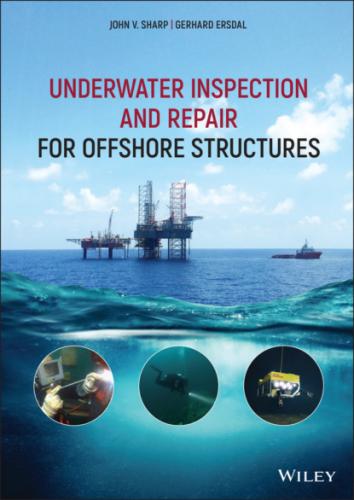1 Introduction to Underwater Inspection and Repair
The way you learn anything is that something fails, and you figure out how not to have it fail again1.
—Robert S. Arrighi
Repair is an exacting, technical matter involving five basic steps: (1) finding the deterioration, (2) determining the cause, (3) evaluating the strength of the existing structure, (4) evaluating the need for repair and (5) selecting and implementing a repair procedure2.
—Sidney M. Johnson
Before anything else, preparation is the key to success3.
—Alexander Graham Bell
1.1 Background
Offshore structures for the production of oil and gas have a long history. The early offshore oil and gas exploration started in the 1940s in the Gulf of Mexico (GoM) and the Caspian Sea4. This was followed by the development of the North Sea and Brazil in the 1960s and later activities in the Persian Gulf, Africa, Australia, Asia and other areas. More recently offshore structures for wind energy production have been developed, initially in Denmark in the early 1990s followed by significant growth in several European countries, particularly the UK.
These offshore structures are continuously exposed to:
a sea‐water environment, which can cause corrosion and erosion;
active and environmental loads, which may cause fatigue cracking and buckling; and
incidents and accidents causing physical damage such as dents and bows.
Damage of these kinds can cause loss of integrity of the structure and decrease the margin of safety. In addition, many oil and gas structures and the earliest of the wind structures are now ageing and many have been through a life extension process. Nevertheless, there is a continuing requirement to demonstrate that these installations remain safe for the personnel that operate them.
Unfortunately, there have been a number of accidents over the years with considerable loss of life resulting from structural failures related to inadequate inspection or failure to mitigate anomalies. A typical example is the semi‐submersible Alexander L. Kielland accident in 1980 resulting in the loss of 123 lives. The cause of the accident was the loss of a brace member from fatigue and fracture leading to overturning and sinking. Fatigue failure initiated at a fabrication defect as a result of a combination of poor welding and lack of in‐service inspection, which led to a catastrophic failure.
Other accidents with serious loss of lives have occurred in which structural failure played a part. In the shipping industry the MV Erika and MV Prestige accidents are examples of structural failures in storms where anomalies in these vessels failed to be detected and mitigated. It is clear from these accidents that in‐service inspection and repair of structures are vital for the safety of structures. In addition, these are also normally required by regulators and class societies (i.e. ship classification societies, also known as ship classification organisations).
There are numerous incidences of damage and deterioration that had they not been detected by inspection and subsequently repaired or remediated could have led to serious accidents and loss of life. As later shown in this book these types of damage and deterioration include severe corrosion, fatigue cracks, dents and bows from impact loads, and severed members that could have resulted in more widespread structural failure and ultimate collapse of the structure. While these instances are well known to the companies involved and the relevant regulators, they are not necessarily well reported in the public domain. However, they show the importance and value of undertaking inspection and repair in a timely way for the prevention of escalation and maintaining safety. In addition, many offshore structures are now in an ageing phase where inspection and repair are likely to be more important. The authors believe that this is an opportune time to review this previous work on inspection, evaluation, repair and mitigation of such structures.
There are few books on underwater inspection and repair and those that exist are now significantly out of date. However, a significant amount of previous work is available from research and technology developments on the topic providing an extensive expertise accumulated in inspection and repair of structures through many years of offshore operational experience. Unfortunately, many of these reports are presently unavailable in the public domain.
This book is intended to indicate the current practice in these fields for those involved in keeping offshore structures safe, including practicing engineers involved in structural integrity management and also for students in the field.
1.2 Why Do We Inspect and Repair Structures
Although we intend to design, fabricate and install structures for safe operation during their design life, the environment, cyclic loading and accidental events will cause anomalies5, which if not detected and repaired have the potential to cause failure of the structure. Ageing increases the likelihood of such anomalies being present.
Figure 1 shows the drivers for why structures are inspected. These include factors such as the balance between minimizing the life cycle cost and ensuring safe and functional structures (safe operation) by means of inspection and repair. These two drivers will often be in conflict but will also in some cases coincide as failures that lead to major
